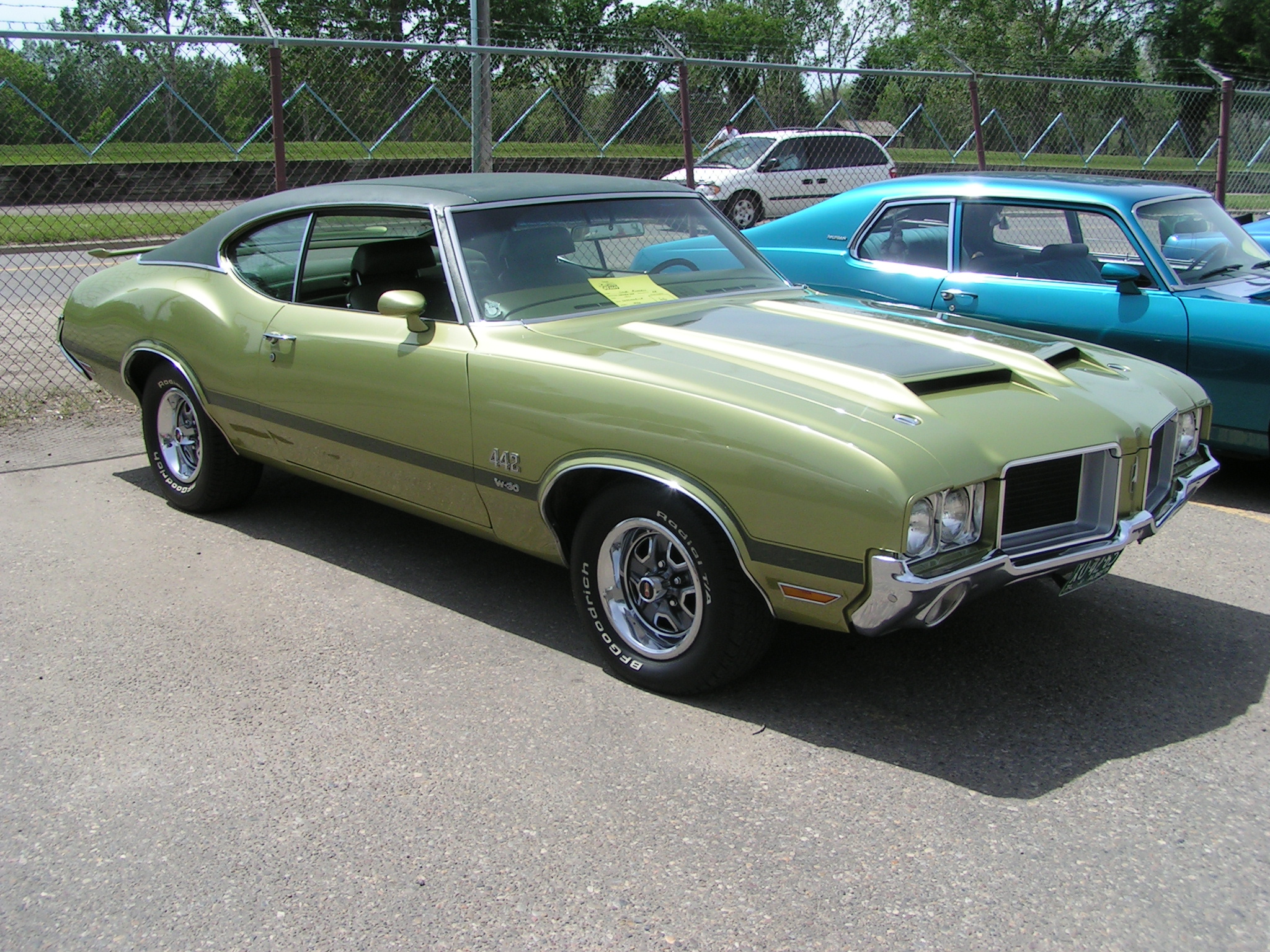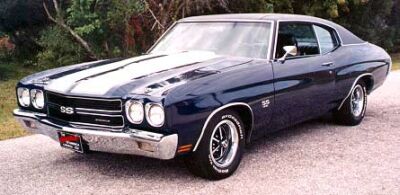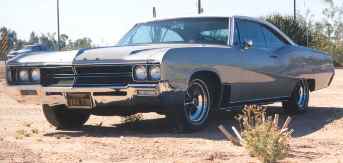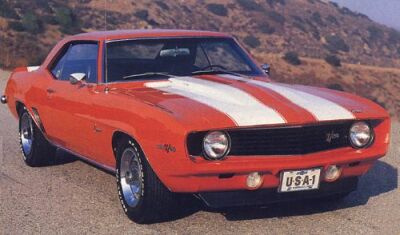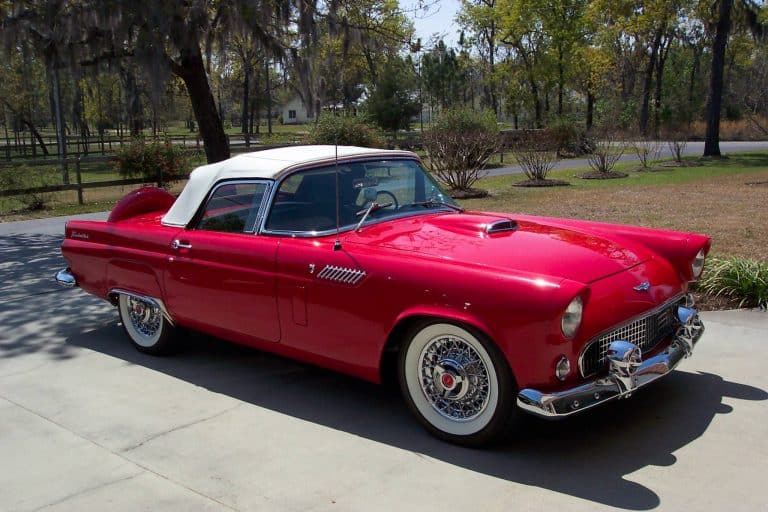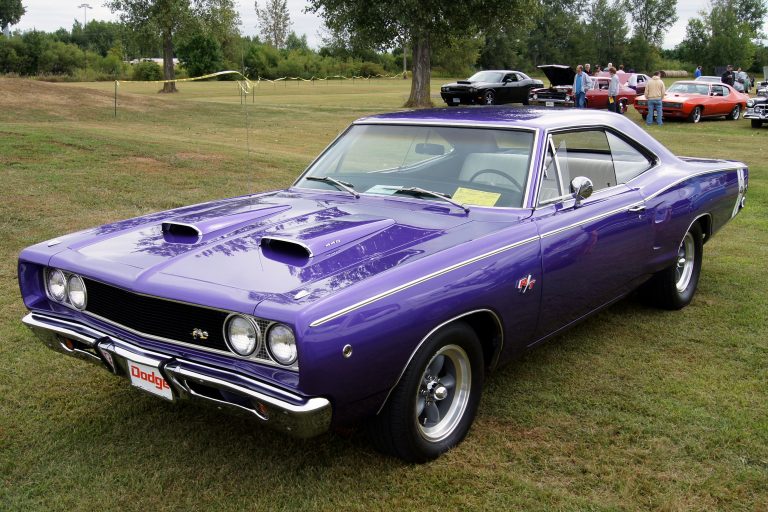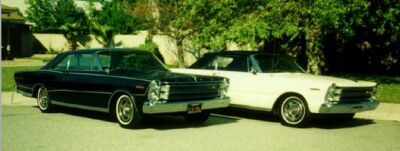Oldsmobile 442

Meet Chandler
Chandler has a bachelors and masters degree in history as well as a passion for classics and muscle cars. His education and historical knowledge makes him skilled at crafting highly detailed articles about America’s muscle cars and automotive history. His love of muscle cars is undeniable, with him seeking them out at every opportunity during his visits to auto shows and car meets. Chandler’s knowledge and enthusiasm towards automotive history make him a great asset to the Muscle Car Club community.
It might be hard to imagine today, but for many years, Oldsmobile was one of the most important subsidiaries in the General Motors lineup. GM slotted Oldsmobile between the standard Pontiac and luxury Buick brands, and they dominated the car market for much of the 20th century. Their demise in 2004 notwithstanding, Oldsmobile was a very important part of the American car manufacturing industry, and they produced some outstanding vehicles. None were more legendary than the Storied Oldsmobile 442 (or Oldsmobile 4-4-2).
GM first released the Oldsmobile 442 in 1964 as an option package for the F-85s and Cutlasses. In 1968, they first made the 442 a standalone vehicle, but it returned to being a Cutlass option in 1972. The original run of Oldsmobile 442s ended in 1980, but Oldsmobile revived the moniker from 1985–1987 and 1990–1991, as an option again.
The 4-4-2 in the name stood for three things: A four-barrel carburetor, four-speed manual transmission, and dual exhaust outlets. The 442’s early competition was the Pontiac GTO and the Chevrolet Chevelle, but it never came close to matching their production. Still, for many years the Oldsmobile 442 was one of the best handling, best looking, and highest performance vehicles in the GM lineup.
Oldsmobile 4-4-2 Overview
Oldsmobile made the 442 from 1964–1980, 1985–1987, and 1990–1991. Of this time, only from 1968–1971 was the Oldsmobile 442 its own standalone vehicle, every other year it was an option for the Cutlass. Sales peaked in 1968 with more than 30,000, but most other years GM built less than 10,000. The 1985 and 1990 reintroductions were not very well received and sold poorly.
The first generation of the Oldsmobile 442 lasted from 1964–1967. During these years, Oldsmobile introduced the 442 as an option for either the F-85s or Cutlasses. It provided a more powerful engine, better handling and suspension, and was not an exceptionally expensive option. In 1964, the available engine was a 330 cid V8, but starting in 1965 Oldsmobile put a 400 cid big-block under the hood. The 442 quickly earned a reputation for itself as the most balanced muscle car available.
The second generation lasted from 1968–1972, and saw the 442 at its zenith, both in terms of performance and popularity. From 1968–1971, Oldsmobile offered the 442 as a standalone vehicle, but slumping sales put the kibosh on that pretty quickly. It returned in 1972 as a Cutlass option again.
The third generation of Oldsmobile 442 lasted from 1973–1977, and this generation saw the decline of the 442 option. Increasing emissions restrictions and the oil crisis conspired to strip all American muscle cars of their brawn, and they defeated the 442 as well. Comparatively, the car was still competitive through 1973, but after performance dropped precipitously and would never crack 200 horsepower again.
The End and a New Beginning
The final true generation of the 442 lasted from 1978–1980, as the 442 limped along to an inglorious fate. For 1981–1984, Oldsmobile eliminated the 442 from the lineup. It just no longer sold well or made any sense. Long removed from the days of bargain performance, the 442 just did not stimulate any interest any longer.
Oldsmobile briefly resurrected the 442 option moniker for five model years, from 1985–1987 and 1990–1991. Once again, sales were relatively poor, and Oldsmobile discontinued both of them quickly. Since then, the 442 remained dormant, and Oldsmobile closed down in 2004. It’s unknown if GM will ever revive the 442 moniker, but it would fit right in with today’s powerful muscle cars.
First Generation Oldsmobile 442 (1964-1967)
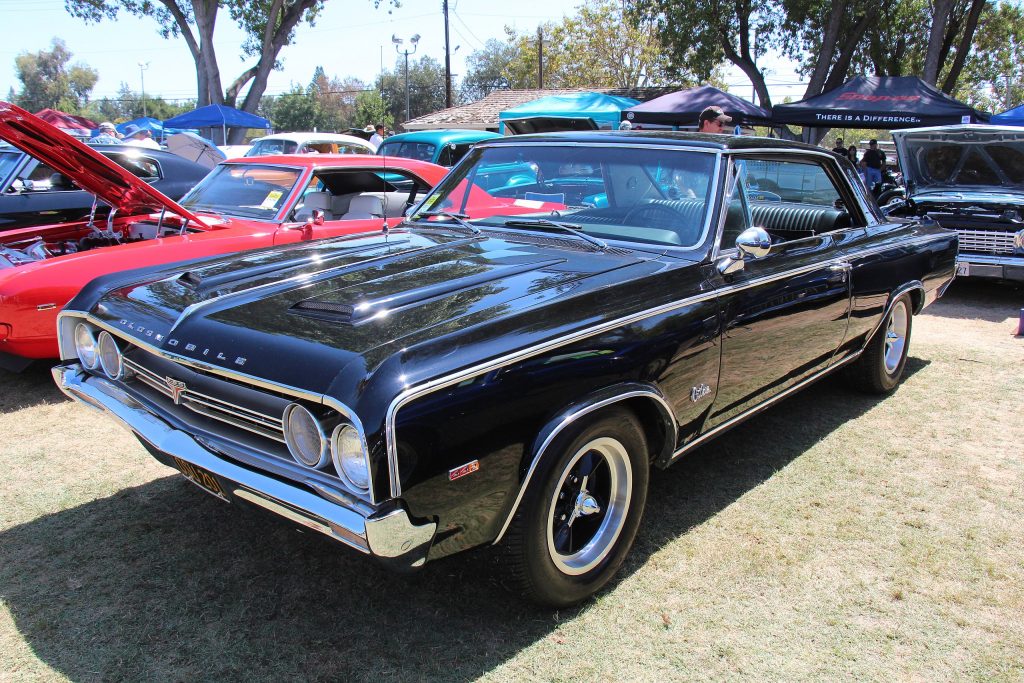
The first generation of the Oldsmobile 442 lasted from 1964–1967. Oldsmobile introduced the 442 option towards the end of the model year, and marketed it for those who wanted a little extra performance from their non-station wagon F85 or Cutlass. Officially, Olds called the 442 the “Option Number B-09 Police Apprehender Pursuit.” They made it clear from the beginning the 442 was all about increasing performance.
Officially, Oldsmobile claimed the 4-4-2 stood for Four-barrel carburetor, Four-speed manual transmission, and Dual (2) exhaust outlets. This changed in 1965 with the addition of a 400 cid V8 engine, to mean Four-hundred cid engine, Four-barrel carburetor, and Dual exhausts. Options for 1964 included power steering, two-speed windshield wipers, reverse-lights, power front seat, and 3.55:1 non-Posi-traction rear end.
The 442 was cheaper than the Ford Mustang and Pontiac GTO LeMans – its main competitors – and offered solid performance. For the 1965 Oldsmobile 442, GM revised the grille, taillights, upholstery, dashboard, and wheels. In 1966, Oldsmobile once again revised the 442, giving it a more refined and creased look. That year they got serious about performance. They introduced the W30 option package, which gave 442 buyers another option that increased performance even more.
Sales rapidly increased on the Oldsmobile 442, from just under 3,000 in 1964 to more than 24,000 in 1967. Though not nearly at the level of the GTO, the 442 was still able to hold its own as an option while the GTO became a standalone model in 1966. For the 1964 Oldsmobile 442, customers had the option of either a two-door coupe, hardtop, or convertible, or a four-door sedan. For 1965, Olds dropped the four-door, and it would not return.
1964-1967 Oldsmobile 442 Engine Technical Specifications
| Model Years | Engine | Horsepower | Torque |
| 1964 | 330 cid V8 (4bbl) | 310 horsepower | 355 lb-ft |
| 1965 | 400 cid V8 (4bbl) | 345 horsepower | 440 lb-ft |
| 1966-1967 | 400 cid V8 (4bbl) | 350 horsepower | 440 lb-ft |
| 1966 | 400 cid V8 (3×2) (W30) | 360 horsepower | 440 lb-ft |
| 1967 | 400 cid V8 (2bbl) | 300 horsepower | 425 lb-ft |
| 1967 | 400 cid V8 (4bbl) (W30) | 360 horsepower | 440 lb-ft |
First Generation Engines and Performance
For the first generation Oldsmobile 442, there were two different engines available with a variety of carburetors. For the inaugural 442, the only engine was a 330 cid V8 with a four-barrel Rochester 4GC carburetor. It bumped out 310 horsepower, a solid 20 horsepower increase over the non-442 Cutlass V8. Part of the increase came from a higher-lift camshaft and dual-snorkel air cleaner, and the engine was reinforced for the extra power.
According to the August 1964 issue of Car Life, the 442 went from zero to 60 mph in 7.5 seconds and did the ¼ mile in 15.5 seconds @ 90 mph. Not earth shattering, but not too shabby for 1964. For the 1965 Oldsmobile 442, GM upgraded the engine to a larger 400 cid V8 big-block producing 345 horsepower. This increased performance to 5.5 second zero to 60 mph and a 15 second ¼ mile at 98 mph.
In 1966, things took an even bigger step up with the introduction of the W30 engine option. This meant ditching the four-barrel Rochester for a Tri-power setup. Tri-powers were three-double-barrel carburetors put together for a six-barrel unit. This increased output to 360 horsepower, but actual performance was pretty similar with the quad-barrel.
For the 1967 Oldsmobile 442, they dropped the Tri-power option – due to a universal GM edict banning it from all but the Chevrolet Corvette – and replaced it with a similar powered ram-air option. Though the new 442 hood did have functional hood louvers, the ram-air actually came from modified front ducting near the grille.
First Generation Oldsmobile 442 Production Numbers
| Model Year | Bodystyle | Production Total |
| 1964 | Oldsmobile 442 | 2,999 |
| 1965 | Oldsmobile 442 | 19,577 |
| 1966 | Oldsmobile 442 | 21,997 |
| 1967 | Oldsmobile 442 | 24,829 |
Second Generation Oldsmobile 442 (1968-1972)
The second generation of the Oldsmobile 442 lasted from 1968–1972. Following the lead of the Pontiac GTO in 1966, Oldsmobile made the 442 its own standalone model for 1968. This year saw the car reach its peak popularity with more than 30,000 units sold, but that dropped quickly year-after-year. By 1972, with the 442 now relegated as an option again, less than 10,000 customers opted for it.
For the inaugural standalone 1968 Oldsmobile 442, customers could get it as a two-door sports coupe, Holiday hardtop, or convertible. The hardtop was by far the most popular, and it wasn’t even close. Oldsmobile put the 442 on the same GM A-body as the Cutlass, and it shared it with the Buick Skylark, Chevrolet Chevelle, and Chevrolet El Camino, among others. They had slightly revised the model for 1968, adding more curves and a more “coke bottle” shape.
For the 1969 Oldsmobile 442, they added a new split grille, new badges, and the W30 option customers got decal cutouts and special striping. For 1970, the 442 got some distinguishing features, namely fenders, rear quarter-panels, trunk lid, and front and rear bumpers. Still, Oldsmobile primarily used the Cutlass Supreme as the base car.
The exterior and interior changed little through 1972, with slight changes to only a few things including the grille and hood. Starting in 1972, Oldsmobile reverted the 442 to an option on the Cutlass S, as diminishing sales – partly due to the new Hurst/Olds – made it no longer worthwhile.
The Hurst/Olds Models
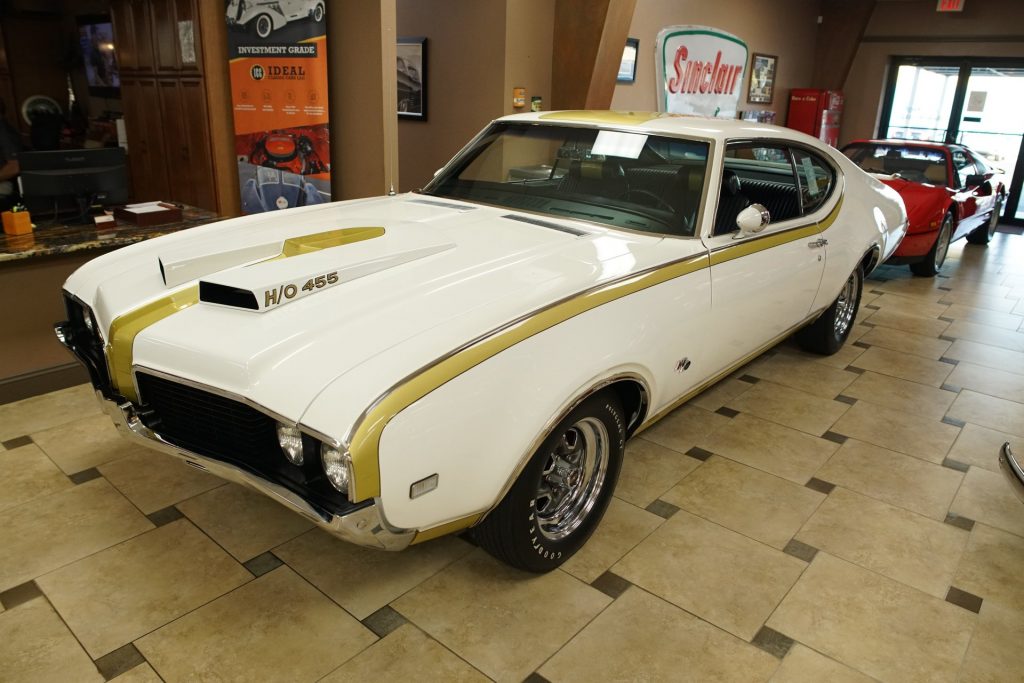
Beginning in 1968, Oldsmobile introduced the limited Hurst/Olds models. These were 442s that offered even greater performance from the factory. Oldsmobile made them in 1968, 1969, and 1972 (during the second generation), and they were the epitome of Olds performance. For 1968, instead of the 400 cid V8, Olds stuffed a larger 455 cid V8 making 390 horsepower under the hood. Compared with the standard 442, the Hurst/Olds ran a 12.9 second ¼ mile at 109 mph, which was pretty mind blowing for the time.
They returned the Hurst/Olds for 1969, with a slightly lighter frame but also a different version of the 455, and it was slightly slower on the strip. After a two-year hiatus, the Hurst/Olds returned for 1972, and was used for the Indianapolis 500 Pace Car. The engine was again less powerful, like the entire Oldsmobile lineup, but it sold reasonably well as a high-performance special.
1968-1972 Oldsmobile 442 Engine Technical Specifications
| Model Years | Engine | Horsepower | Torque |
| 1968 | 400 cid V8 (2bbl) | 290 horsepower | 425 lb-ft |
| 1968-1969 | 400 cid V8 (4bbl) | 325 horsepower | 440 lb-t |
| 1968-1969 | 400 cid V8 (4bbl) | 350 horsepower | 440 lb-ft |
| 1968-1969 | 400 cid V8 (4bbl) | 360 horsepower (W30) | 400 lb-ft |
| 1970 | 455 cid V8 (4bbl) | 365 horsepower | 510 lb-ft |
| 1970 | 455 cid V8 (4bbl) | 370 horsepower (W30) | 500 lb-ft |
| 1971 | 455 cid V8 (4bbl) | 340 horsepower (Gross) | 460 lb-ft (Gross) |
| 1971 | 455 cid V8 (4bbl) | 270 horsepower (Net) | 370 lb-ft (Net) |
| 1971 | 455 cid V8 (4bbl) | 350 horsepower (Gross) (W30) | 460 lb-ft (Gross) |
| 1971 | 455 cid V8 (4bbl) | 280 horsepower (Net) | 370 lb-ft (Net) |
| 1972 | 350 cid V8 (2bbl) | 160 horsepower | 275 lb-ft |
| 1972 | 350 cid V8 (4bbl) | 175 horsepower | 295 lb-ft |
| 1972 | 350 cid V8 (4bbl) | 180 horsepower | 275 lb-ft |
| 1972 | 350 cid V8 (4bbl) | 200 horsepower | 300 lb-ft |
| 1972 | 455 cid V8 (4bbl) | 250 horsepower | 370 lb-ft |
| 1972 | 455 cid V8 (4bbl) | 300 horsepower | 410 lb-ft |
Second Generation Engines and Performance
For the first year of the second generation 442, Oldsmobile replaced the 1967 400 cid V8 with a new 400 cid V8. It was similar to the outgoing engine, but used a completely different block. Though it still made the same power. Also in 1968, they introduced the first two-barrel V8 for the 442, a 290 horsepower version used in the “turnpike cruiser” economy edition. However, they eliminated the turnpike after just one year.
For 1968–1969 Oldsmobile 442s, power remained the same, with the W30 option boasting the superior 360 horsepower version through the ram-air modification. In 1970, a floor-mounted three-speed Hurst manual gear shift, heavy-duty suspension, and the “Rocket 455” cid V8 became standard.
The Rocket 455 boasted an impressive 500-510 lb-ft of torque, to go with a healthy 365-370 horsepower. According to an issue from that year’s Hot Rod magazine, the W30 (370 horsepower) 455 powered 4-4-2 ran the ¼ mile in 13.98 seconds at 101 mph with a 3.91:1 rear axle. Beginning in 1971, Oldsmobile started to detune their engines due to increasing emissions restrictions. This meant lower compression ratios and less performance, and even worse changes came the following year.
Already in 1971, Olds started to list both gross and net horsepower ratings, but beginning in 1972 they only printed net. Due to net horsepower ratings taking into account more parasitic loss, horsepower and torque numbers appeared much lower. This meant a 340 horsepower gross engine now made 270 horsepower net. Try as they could, nobody could make up the missing 70 horsepower with marketing.
Still, performance wise they were largely the same and put down similar numbers at the track. The 1971 W30 442 pumped out 350 horsepower, numbers the 442 would never come close to seeing again.
The End of an Era
In 1972, now an option for the Cutlass S, both the 455 V8 and a 350 V8 were options. The 350 cid V8 made 160-200 horsepower, and were either the L32 or L34 models of the Olds 350 V8. The 455 cid made either 250 horsepower or 300 horsepower (with the W30 option). This was basically the same as the last year, but looked worse on paper due to the new net horsepower ratings.
Second Generation Oldsmobile 442 Production Numbers
| Model Year | Bodystyle | Production Total |
| 1968 | Oldsmobile 442 | 33,607 |
| 1969 | Oldsmobile 442 | 26,357 |
| 1970 | Oldsmobile 442 | 19,330 |
| 1971 | Oldsmobile 442 | 7,589 |
| 1972 | Oldsmobile 442 | 9,715 |
Third Generation Oldsmobile 442 (1973-1977)
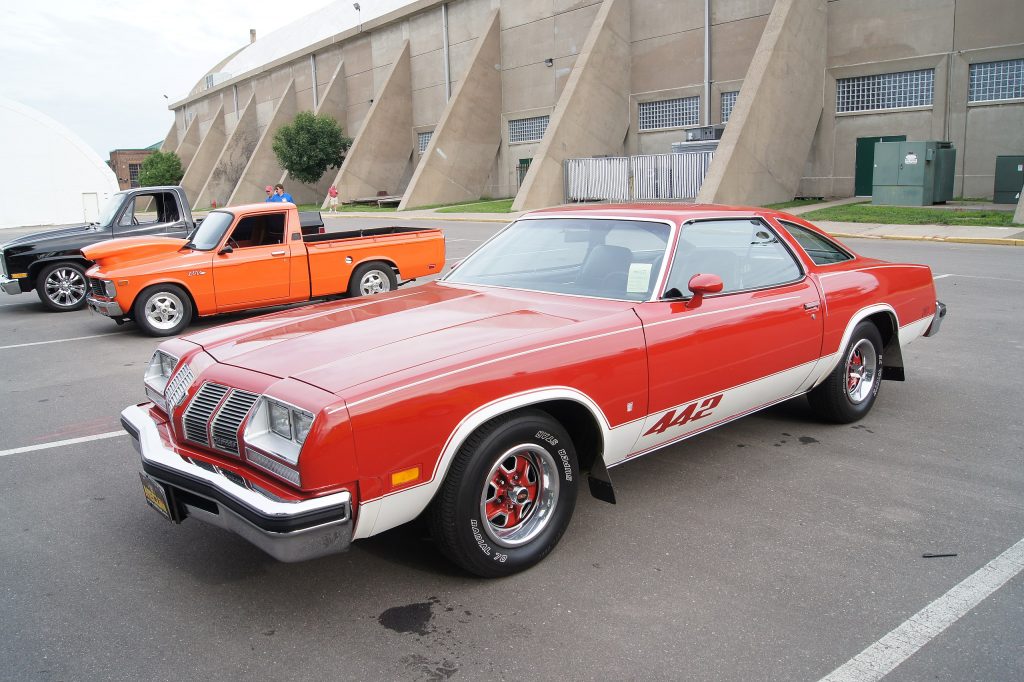
The third generation of the Oldsmobile lasted from 1973–1977, and it remained just an option package. The 1973–1977 Oldsmobile 442 was an option for the Cutlass and Cutlass S coupes, which now rode on the new GM Colonnade body style. It was still the same A-body, but only coupes were available and new additions included frameless doors, and it was longer. The 442 was ordered as the W29 option for the third generation 442 Cutlass.
No longer available beginning with the third generation were the performance engines of the W30 option code, as it became a lowly appearance option. There was the 1973 Oldsmobile Hurst/Olds, but performance was not much better and ratings were the same. For the 1974 Oldsmobile 442, models received a facelift with a new grille, federally mandated 5 mph crash-absorbing bumpers, and tail lights.
They introduced a sloped nose for the 1976 Oldsmobile 442, but for the most part the third generation 442s all looked pretty similar. The Hurst/Olds continued through 1975, but were not very inspiring. They looked the part, but emissions rendered their performance numbers less than enthusiastic.
1973-1977 Oldsmobile 442 Engine Technical Specifications
| Model Years | Engine | Horsepower | Torque |
| 1973-1974 | 350 cid V8 (4bbl) | 180 horsepower | 275 lb-ft |
| 1973-1974 | 350 cid V8 (4bbl) | 200 horsepower | 300 lb-ft |
| 1973 | 455 cid V8 (4bbl) | 250 horsepower | 370 lb-ft |
| 1973 | 455 cid V8 (4bbl) | 270 horsepower | 370 lb-ft |
| 1974 | 455 cid V8 (4bbl) | 230 horsepower | 370 lb-ft |
| 1975 | 250 cid I6 (1bbl) | 105 horsepower | 185 lb-ft |
| 1975-1977 | 260 cid V8 (2bbl) | 110 horsepower | 206 lb-ft |
| 1975-1977 | 350 cid V8 (4bbl) | 170 horsepower | 275 lb-ft |
| 1975-1976 | 455 cid V8 (4bbl) | 190 horsepower | 350 lb-ft |
| 1977 | 231 cid V6 (2bbl) | 105 horsepower | 185 lb-ft |
| 1977 | 403 cid V8 (4bbl) | 185 horsepower | 320 lb-ft |
Third Generation Engines and Performance
Through 1976, Oldsmobile kept both the 350 and 455 V8s, but they had to drop the 455 for 1977 due to emissions restrictions. By then, they were not even capable of 200 horsepower, even with a four-barrel carb, though the 455 still produced a healthy 350 lb-ft of torque in 1976.
Since the 442 could be had on any Cutlass or Cutlass S coupe, the number of engines expanded in 1975 to include a 250 cid inline-6 and a 260 cid V8. These were for the economy minded buyers, and produced negligible performance.
For the 1977 Oldsmobile 442, GM brought out the 403 cid V8 making 185 horsepower and 320 lb-ft of torque. This was the last year of the third generation, and was not an inspiring close. Once a performance machine, the most anyone could say now was that it at least handled well.
Third Generation Oldsmobile 442 Production Numbers
| Model Year | Bodystyle | Production Total |
| 1973 | Cutlass 442 | 9,797 |
| 1974 | Cutlass 442 | 7,204 |
| 1975 | Cutlass 442 | 6,015 |
| 1976 | Cutlass 442 | 9,576 (Unverified) |
| 1977 | Cutlass 442 | 11,649 (Unverified) |
Fourth Generation Oldsmobile 442 (1978-1980)
The fourth generation lasted from 1978–1980 and was the last true generation for the Oldsmobile 442. GM downsized the A-body starting in 1978, and the Cutlass went along with it. For 1978–1979, the 442 was an option for the Cutlass Salon with the “Aeroback” or fastback styling. In 1980, the 442 switched to the Cutlass Calais.
The W30 badging returned to the fenders for 1980 but was still an appearance package. The 1980 Oldsmobile 442 was basically a 1979 Hurst/Olds, which had been brought back for one year. Specific production breakdown of the 442 option for the fourth generation Cutlass are not available, but they were likely not very good. In 1981, the 442 no longer appeared as an option on any Oldsmobile, a relic of an era bygone.
1978-1980 Oldsmobile 442 Engine Technical Specifications
| Model Years | Engine | Horsepower | Torque |
| 1978 | 231 cid V6 (2bbl) | 105 horsepower | 185 lb-ft |
| 1978 | 260 cid V8 (2bbl) | 110 horsepower | 205 lb-ft |
| 1978 | 305 cid V8 (2bbl) | 145 horsepower | 245 lb-ft |
| 1978 | 305 cid V8 (4bbl) | 160 horsepower | 260 lb-ft |
| 1979 | 231 cid V6 (2bbl) | 115 horsepower | 190 lb-ft |
| 1979 | 260 cid V8 (2bbl) | 105 horsepower | 205 lb-ft |
| 1979 | 305 cid V8 (4bbl) | 160 horsepower | 235 lb-ft |
| 1980 | 350 cid V8 (4bbl) | 170 horsepower | 275 lb-ft |
Fourth Generation Engines and Performance
For the fourth generation engines, nothing stood out in terms of performance. For 1978, the 231 V6 carried over from the year prior, as did the 260 V8. New was a 305 V8, that made either 145-160 horsepower. For 1980, Oldsmobile trotted out the larger 350 cid V8, which made 170 horsepower, which was unfortunately the best the generation would ever produce.
Oldsmobile Cutlass Supreme 442 (1985-1987)
Oldsmobile brought back the 442 moniker for 1985 after a four-year hiatus. They made it available for the Cutlass Salon coupe, and it competed against other GM ‘80s muscle, like the Chevrolet Monte Carlo and Pontiac Grand Prix. Goodies included a 307 cid V8 engine with a four-barrel carburetor that put out 180 horsepower and 225 lb-ft of torque. This changed to 170 horsepower but 250 lb-ft of torque for the 1987 Oldsmobile 442.
In addition, the 442 option (W42 package) had a 3.73:1 rear axle, dual exhausts, four-speed automatic, performance suspension, and wide tires. The engine had a dual-snorkel air cleaner with a chrome lid. Probably due to the price, which was several thousand dollars, the 442 never sold well in its revamped form.
For the final year 1987 Oldsmobile 442, the platform switched to the Cutlass Supreme, due to it being cheaper. For the late-’80s, the 442 was not a terrible muscle car, but it could not hold a candle to its heritage. It still looked the part, with gold and black paint trims and some nice badging, and in the performance-barren ‘80s actually fit in decently well.
Oldsmobile Cutlass Supreme 442 Engine Technical Specifications
| Model Years | Engine | Horsepower | Torque |
| 1985 | 307 cid V8 (4bbl) | 180 horsepower | 225 lb-ft |
| 1986 | 307 cid V8 (4bbl) | 180 horsepower | 225 lb-ft |
| 1987 | 307 cid V8 (4bbl) | 170 horsepower | 250 lb-ft |
Oldsmobile Cutlass Supreme 442 Production Numbers
| Model Year | Bodystyle | Production Total |
| 1985 | Cutlass 442 | 3,000 |
| 1986 | Cutlass 442 | 4,273 |
| 1987 | Cutlass 442 | 4,208 |
Oldsmobile Cutlass Calais 442 (1990-1991)
The final Oldsmobile 442s rolled off the line in 1990–1991, and the 442 became front-wheel drive. Oldsmobile made the 442 an option on the higher spec Cutlass Calais International Series coupe. Officially, Oldsmobile called it the “Quad 4-4-2,” and it only lasted all of two model years. No longer using the W30 code, the 442 option was one the W40 code, with a high performance W41 available for 1991.
Engine-wise, the power plant was a 2.3 lifter inline-4 that used electronic fuel injection. These were the first 442s not to be carbureted, signaling the new generation of engine building. Unfortunately, power was unchanged in the W40 442, at just 180 horsepower and even less 160 lb-ft of torque. For the 1991 W41 442, that increased to 190 horsepower.
This version of the 2.3 liter was actually hot compared with the standard ones used in other Olds. It used a hotter camshaft to make more power and was available with a five-speed manual.
Sales for the final generation 442 were practically non-existent, and Olds put the moniker out of its misery beginning in 1992. Olds themselves were defunct in 2004, and GM has never revived the 442 namesake.
Oldsmobile Cutlass Calais 442 Engine Technical Specifications
| Model Years | Engine | Horsepower | Torque |
| 1990-1991 | 2.3 lifter I4 (EFI) | 180 horsepower | 160 lb-ft |
| 1991 | 2.3 liter I4 (EFI) | 190 horsepower | 160 lb-ft |
Oldsmobile Cutlass Calais 442 Production Numbers
| Model Year | Bodystyle | Production Total |
| 1990 | Cutlass Calais 442 | 2,629 |
| 1991 | Cutlass Calais 442 | 1,364 |
Oldsmobile 442 FAQ
In 1964, the Oldsmobile 4-4-2 meant Four-barrel carburetor, Four-speed manual transmission, and Dual (2) exhaust outlets. In 1965, this changed to mean Four-hundred cid V8 engine, Four-barrel carburetor, and Dual exhaust outlets.
Many people would argue the top performing Oldsmobile 442 was the 1970 442 with the W30 option package. This made 370 horsepower and 500 lb-ft of torque, and was exceptionally powerful.
The 1968 Oldsmobile 442 was the most popular with 33,607 units sold.
The W30 was an option package for the Oldsmobile 442 from 1966-1971. It provided a higher performance engine as well as handling and suspension upgrades.

